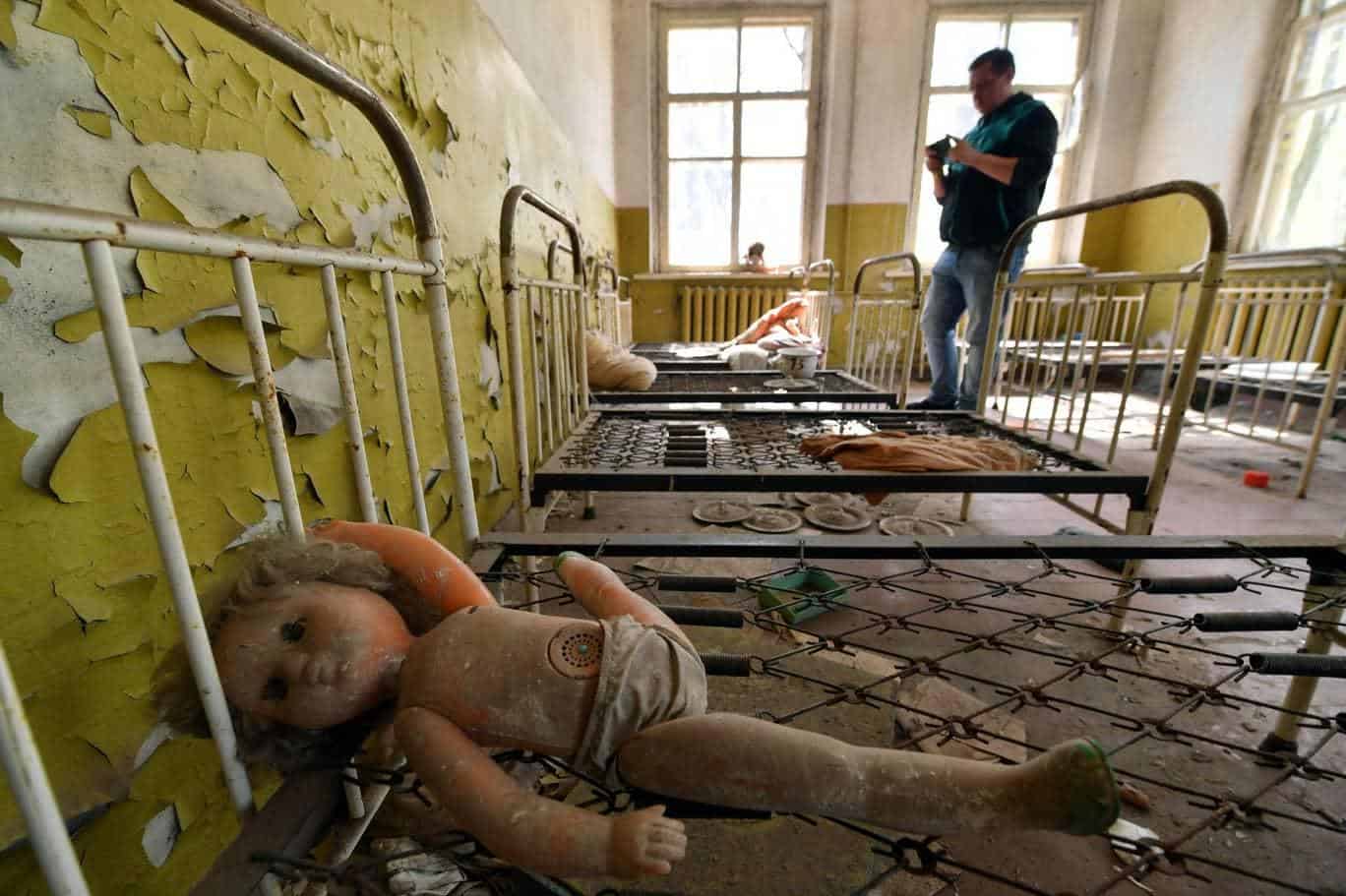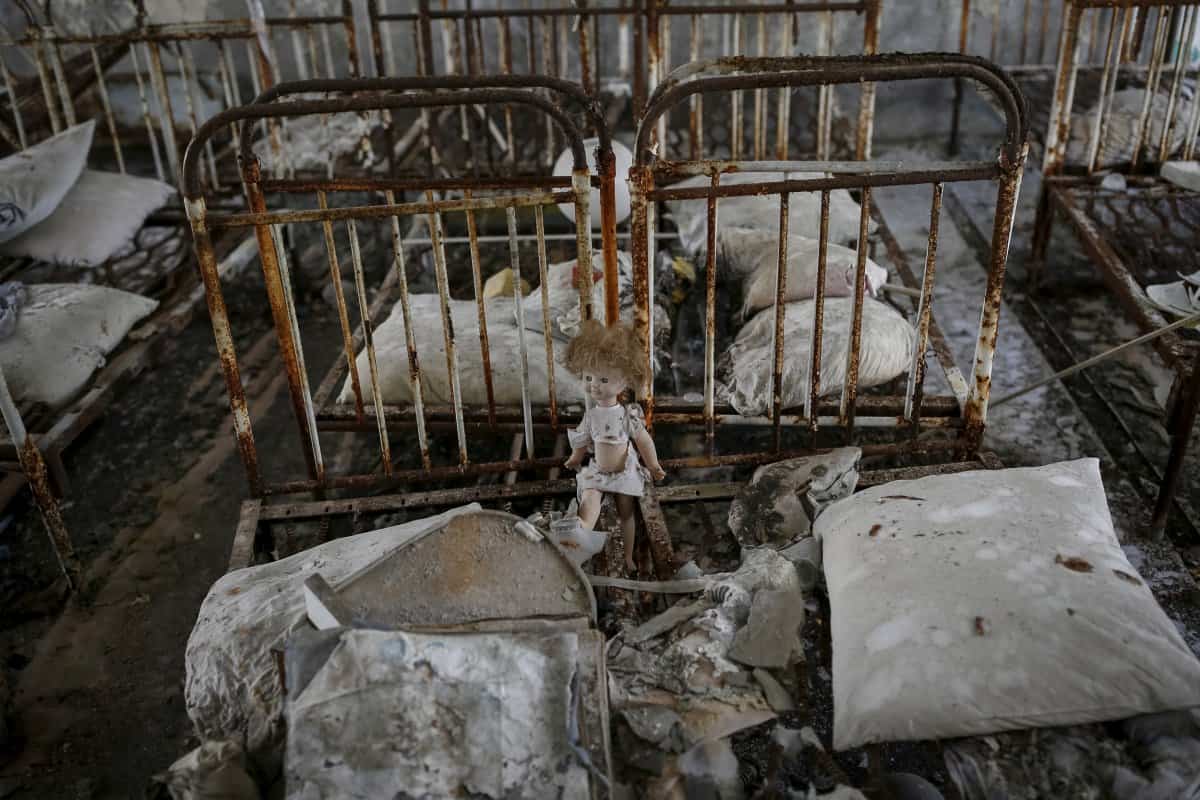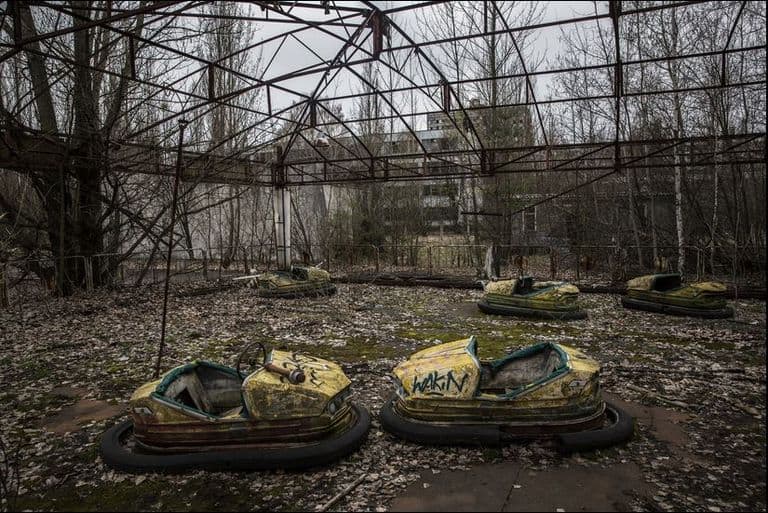Chernobyl .. a man-made tragedy, is it repeated today

One of the worst man-made disasters in its history, the explosion at the Chernobyl nuclear power plant in northern Ukraine, which turned the formerly crowded Pripyat into a ghost town and became known as the "ghost town".
The Chernobyl plant, named after Vladimir Lenin in the Soviet era, is the first nuclear power plant ever built on Ukrainian soil.

Construction of the plant began in 1970, and seven years later the first reactor came into operation, and by 1983 the plant's four reactors were producing about 10 percent of Ukraine's electricity.
While the factory was under construction, prior to the disaster, the first atomic town of workers and their families was built by the Soviet government. Pripyat, founded on February 4, 1970 as a closed nuclear city, was the ninth in the Soviet Union.
The population of the city on the day of the disaster on April 26, 1986 was about 50 thousand people, they are specialists, workers and their families working in the nuclear plant, and today Pripyat represents a picture of the brutality of the nuclear age.
On the night of April 25, 1986, a group of engineers at the plant, in reactor number four, began experimenting with new devices and equipment, and no one expected that this night would not pass peacefully.
 The engineers needed to reduce the power of the nuclear reactor, to get their work done, but as a result of a miscalculation, the output was reduced to a critical level, resulting in an almost complete shutdown of the reactor.
The engineers needed to reduce the power of the nuclear reactor, to get their work done, but as a result of a miscalculation, the output was reduced to a critical level, resulting in an almost complete shutdown of the reactor.
A decision was made immediately to increase the power level, so the reactor began to heat up rapidly, and after a few seconds there were two big explosions.
The explosions partially destroyed the reactor core, sparking a fire that lasted for nine days.
This led to the release of radioactive gases and nuclear dust, into the air above the reactor, which formed a huge cloud in the sky that shot towards Europe.
The volume of the highly radioactive material expelled, about 150 tons, rose into the atmosphere, exposing people to radiation 90 times more than what happened in the Hiroshima atomic bomb in Japan.

On the 26th of April was cruel and horrific, and on the 27th began the evacuation procedures for the population, which lasted for three hours, during which 45 people were transferred to nearby places, far from the direct impact, and then 116 people were forced to leave the area and the surrounding areas.
About 600 people from all former Soviet republics assisted in the evacuations.
Immediately after the disaster, 31 people died, while the most concentrated harmful radiation affected about 600 people, and the highest doses of radiation received about a thousand emergency workers during the first day of the disaster.
In total, about 8.4 million citizens of Belarus, Russia and Ukraine were exposed to radiation.
According to the Ukrainian Chernobyl Federation, about 9000 people were killed as a result of the aftermath of chronic diseases such as cancers, while 55 people were disabled as a result of this tragedy.
Shortly after the explosion, an exclusion zone with a radius of 30 km (17 mi) was created, and in the immediate aftermath of the disaster, workers built a temporary shield over the destroyed reactor, which was called the Ark.
Over time, this sarcophagus deteriorated, and in 2010 a new barrier began to be built, to prevent further leakage into the malfunctioning reactor.
But recently work on the shield was suspended amid the crisis in Ukraine.
On July 7, 1987, six former Chernobyl nuclear power plant officials and technicians were charged with negligence and violating safety regulations.
Three of them: Viktor Bruyehov - the former Chernobyl plant director, Nikolai Fomin - the former chief engineer and Anatoly Dyatlov - the former deputy chief engineer, were sentenced to 10 years in prison.
The last reactor at Chernobyl was permanently closed by decree of the Ukrainian government in 2000.
The damaged power plant is expected to be completely decommissioned by 2065.
In December 2003 the United Nations General Assembly declared April 26 the International Day of Remembrance for Victims of Radiological Accidents and Disasters.






